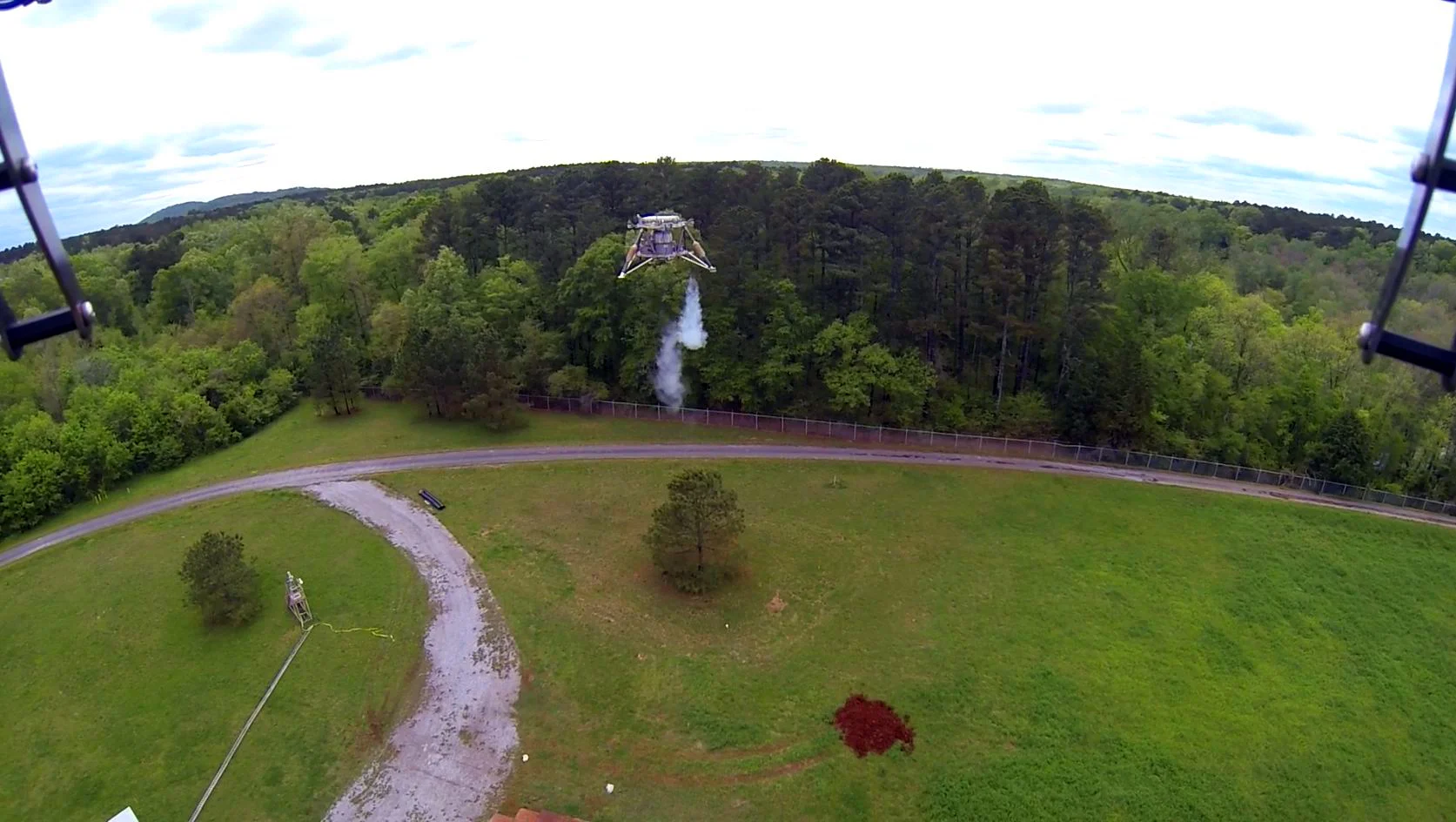The Mighty Eagle, NASA’s robotic prototype lander managed out of the space agency’s Marshall Space Flight Center, recently completed a test series to monitor its systems functionality after coming out of winter storage.
This latest series included a test flight that was recorded by the Quad-Copter – a small vehicle also developed at Marshall that was equipped with a video camera allowing for never-before-seen footage of the Mighty Eagle.

The Mighty Eagle, nicknamed after one of the characters in the popular Angry Birds game, is a three-legged prototype vehicle. It is 4 feet tall, 8 feet in diameter and weighs about 700 pounds when fueled. It is a green vehicle, fueled by 90 percent pure hydrogen peroxide, and is guided by an onboard computer that activates the thrusters to power the craft’s movements.
“We were approached by the Mighty Eagle team to film the vehicle in flight, and we thought it would be a great collaboration,” said Garrick Merrill, a member of the Aero-M team and a computer engineer in the Space Systems Department at Marshall. “It gave us an opportunity to test the copter in a flight situation, and we were really pleased with the results. It really was a win-win situation for both teams — giving us both important data we can use on future flights.”

The Quad-Copter is an achievement in itself. The vehicle was designed and built by the Aero-M team at Marshall as part of the 2012 Unmanned Aerial Systems, or UAS, competition between various NASA centers. The Marshall team was made up of young engineers from across the center who were tasked with designing a vehicle that could perform an autonomous search and rescue mission to locate people after a small plane crash.
The Quad-Copter is built with off-the-shelf, hobbyist-grade parts and uses an open-source flight computer. The initial design of the vehicle uses a two-megapixel IP camera, but for the Mighty Eagle flights the IP camera was removed and a GoPro video camera was attached to provide high-definition video.
“Working with the Aero-M team has been great,” said Jason Adam, flight manager for the Mighty Eagle. “The data we have been able to get from seeing the flight in a way we”ve not before will be really helpful as we prepare for future flights.”
Those future flights include a new test series for the Mighty Eagle in July that will be demonstrating a system fitted on the vehicle for optical hazard avoidance. Roughly 200 tons of dirt from a quarry in the western United States will be brought in by rail to simulate a celestial body. The vehicle will then work through a series of tests to demonstrate the new system’s ability to detect hazards that could cause damage to the vehicle during an actual lunar landing situation. The data will be used to develop hazard avoidance systems for potential future small robotic missions. The Mighty Eagle team intends to collaborate with the Quad-Copter team for a similar flight in July.
The “Mighty Eagle” lander was developed by the Marshall Center and Johns Hopkins University Applied Physics Laboratory in Laurel, Md., for NASA Headquarters’ Planetary Sciences Division, Science Mission Directorate. Key partners in this project include the Von Braun Center for Science and Innovation, which includes the Science Applications International Corporation, Dynetics Corp., and Teledyne Brown Engineering Inc., all of Huntsville.
NASA will use the Mighty Eagle and its larger counterpart, the Project Morpheus prototype lander – being tested at Johnson Space Center – to mature the technology needed to develop a new generation of small, smart, versatile robotic landers capable of achieving scientific and exploration goals on the surface of planetary bodies.






